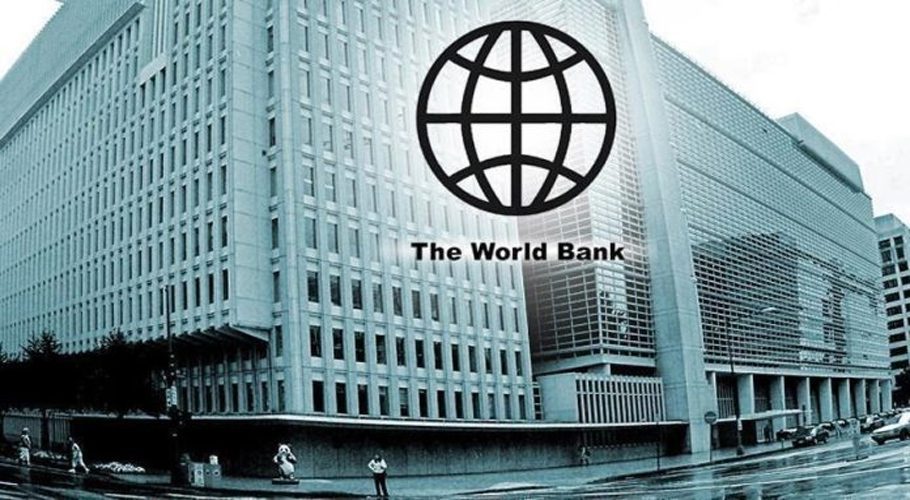ISLAMABAD: The World Bank has estimated Pakistan’s GDP growth to slow down from 6 percent in the fiscal year 2022 to around 2 percent in the fiscal year 2023, while inflation will rise to 23 percent from 12.2 percent, pushing between 5.8 and 10 million people into poverty.
Preliminary projections imply that as a direct result of the floods, Pakistan’s national poverty rate could rise by 2.5 to 4 percentage points, pushing between 5.8 and 10 million people into poverty, according to the bank’s “October 2022 Pakistan Development Update: Inflation and the Poor.”
The bank also stated that the macroeconomic outlook is dependent on the Extended Fund Facility (EFF) program of the International Monetary Fund (IMF) continuing as planned.
Pakistan’s macroeconomic forecast is dependent on international commodity prices and financial circumstances, making it still vulnerable to outside factors. Access to affordable external funding would be hampered by rising global interest rates, declining market sentiment, and tighter global financial conditions. The ongoing conflict between Ukraine and Russia could result in further increases in global energy and food costs, and slower global growth due to rising inflation pose significant threats to Pakistan’s economic prospects, it was said.
The floods are predicted to have a significant detrimental effect on Pakistan’s economy. The economy was already dealing with a challenging transition to reestablish macroeconomic and fiscal equilibrium before the floods. Given the significant relief and recovery expenditure requirements and the slower development of revenue bases as a result of the weaker economic activity, the government’s plans for fiscal reduction are anticipated to become more difficult to implement.
Relief efforts are necessary to lessen the effects of floods on people’s lives and the economy but postponing fiscal consolidation will increase the risks to macroeconomic and fiscal stability in the context of rising inflation, fiscal deficits, and current account deficits.
According to the report, the slower development will be due to catastrophic flood damage and interruptions, a tight monetary policy, high inflation, and an unfavorable global climate. Real GDP growth is predicted to reach 3.2% in the fiscal year 2024, signaling a modest recovery.
According to the paper, macroeconomic risks are still very high for Pakistan because of its big current account deficit, high level of public debt, and declining demand from its traditional export markets due to the slowdown in global economy.
In line with fiscal consolidation efforts and lower subsidy expenditures as a share of GDP, the primary deficit (excluding grants) is forecast to narrow from 3.1 per cent of GDP in the fiscal year 2022 to three per cent in the fiscal year 2023, despite negative impacts to revenue bases and increased expenditure needs due to the floods.
The budget deficit is predicted to decrease by one percentage point to 6.9% of GDP in 2023 and is anticipated to gradually decrease over the next few years as initiatives to increase revenue, particularly the harmonization of the GST and the reform of the personal income tax, take effect. Public debt as a proportion of GDP is expected to steadily decrease throughout the forecast period, despite ongoing primary deficits, in the setting of high inflation and quick nominal GDP growth. Flooding is predicted to increase imports of goods, reflecting domestic demand for cotton and food, while decreasing exports, particularly of rice and textiles.
The government must strike a delicate balance between advancing the necessary budget consolidation and addressing relief and recovery requirements in order to control short-term risks. Maintaining market confidence will be essential in light of the significant domestic and international finance demands, persistent political uncertainty, and impending elections.
Manage market views by defining an economic recovery clearly and carrying it out successfully. Maintaining a strict stance on monetary policy, pursuing fiscal reduction to the fullest degree possible, particularly through the careful prioritizing and targeting of any new expenditures, and moving forward with planned structural changes, notably those in the energy sector, will be crucial.
Bank advised taking into account developing trade routes with India to get essential foodstuffs and cotton, in order to lessen the expected surplus demand that the floods will produce. Given its production practices and closeness, India might be an inexpensive provider of these products. Devastating floods will have a negative impact on efforts to reduce poverty, according to the report.
The research made notice of the fact that inflation is significant for investment and growth and directly affects household wellbeing. The consequences of inflation on businesses and families discourage investment choices, encourage the purchase of less productive or efficient assets, undermine external competitiveness, reduce purchasing power, and have a negative impact on asset prices.
Rising energy costs have also been a significant factor in inflation, as they reflect increased global energy costs, a weaker Rupee, and urgently required increases in government-mandated energy prices. Energy price inflation increased to 80.7% in urban areas and 67.8% in rural areas in August 2022 as a result of increases in fuel costs and tariff adjustments on power pricing.
It went on to say that in the case of Pakistan’s economy, expansionary fiscal policies and the slow implementation of monetary policy responses caused an economic overheat that exacerbated inflationary pressures.



































